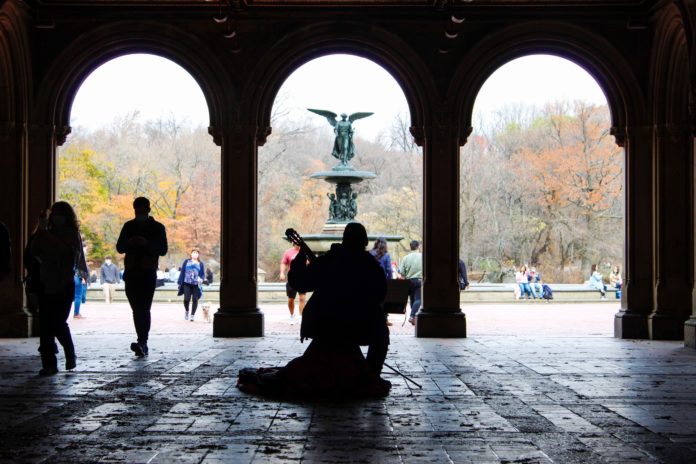
For nearly as long as the arm of recorded history stretches, humans have relied on the sense of hearing to create auditory art. Music, commonly called the universal language, is what many have said can unite people all over the world. But more than that, it distinguishes us and gives us a space to carve out our own identity.
In their book “Sound, Society and the Geography of Popular Music,” professors Thomas Bell and Ola Johansson wrote about how artists from a multitude of genres carve out their identities in such a way that it is inseparable from their ‘territory,’ or the territory in which they belong.
Countless artists draw on the places where they spent their formative years when making music. From classic songs such as “Sweet Home Alabama” by Lynyrd Skynyrd to songs from contemporary rising artists, like “Vegas Lights” by Panic! At The Disco.
And sometimes it’s about more than just a song. For alternative hip-hop group “Brockhampton,” it’s about their band’s very name, which was adopted from the name of the street that group-leader Kevin Abstract grew up.
We are also fortunate enough to live in a world where artists can carve out an identity that extends beyond the dictate of dominant Western European and American cultural norms. And it is beautiful. Each one of these nearly two-hundred countries offers its own music that owes its uniqueness to the country’s geography, culture and tradition.
The Nordic region of Europe has long been a place where cooperative folk dance has created an imaginative landscape influenced by its mountainous topography. But rather than terrain, landscapes or water systems, researcher Petri Hoppu found that folk dance was filled with movements, holds and music that are attached to certain geographic areas.
Perhaps that is why you could listen to “Stjernestøv,” also called “Star Dust,” by Norwegian singer-songwriter AURORA, and swear that you were traversing the vast, soaring fjords of the region of Scandinavia, beholding endless oceans of blue and the breathtaking northern lights that dance across the midnight sky.
Folk music from countless regions brings to the table tangible distinctions driven by their respective cultures, traditions, spiritual practices and social norms. For example, percussive rhythms and vocal patterns found in African folk music denote great ritual significance, a trend that continues to manifest itself through the works of Senegalese spiritual pop singer Baaba Maal.
To listen to the work of an artist from a different part of the world is a beautiful moment of awakening to a bigger, wider world of art. So go, seize your moment. This is your time to expose yourself to this great big world. With its seven continents and one hundred and ninety-five countries, all of them are brimming with music.
For questions/comments about this story email thewhitarts23@gmail.com or tweet @TheWhitOnline.





This is so true! I mean, Britpop is an entire genre and it is so good and produces very specific images.